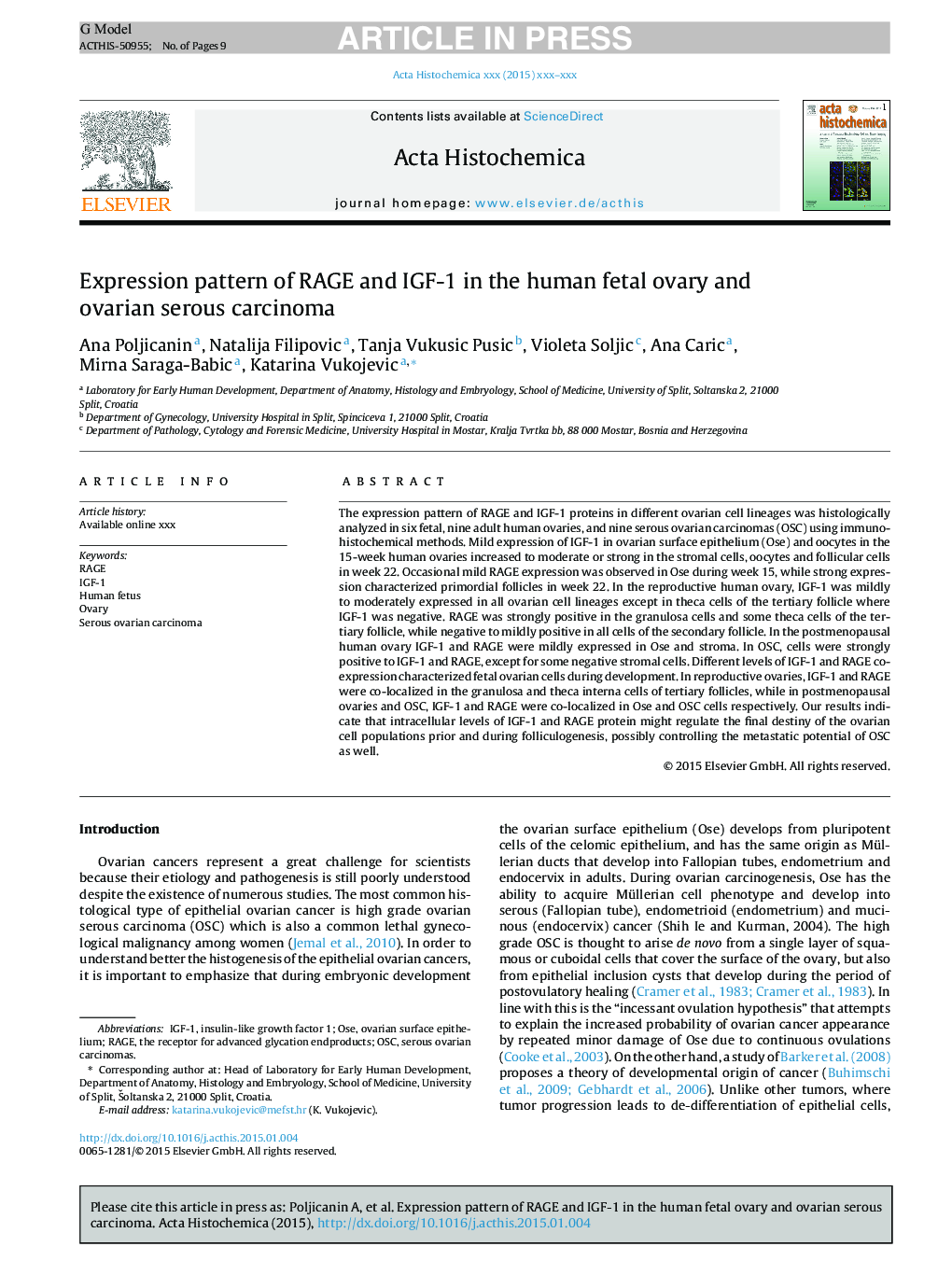| Article ID | Journal | Published Year | Pages | File Type |
|---|---|---|---|---|
| 8287654 | Acta Histochemica | 2015 | 9 Pages |
Abstract
The expression pattern of RAGE and IGF-1 proteins in different ovarian cell lineages was histologically analyzed in six fetal, nine adult human ovaries, and nine serous ovarian carcinomas (OSC) using immunohistochemical methods. Mild expression of IGF-1 in ovarian surface epithelium (Ose) and oocytes in the 15-week human ovaries increased to moderate or strong in the stromal cells, oocytes and follicular cells in week 22. Occasional mild RAGE expression was observed in Ose during week 15, while strong expression characterized primordial follicles in week 22. In the reproductive human ovary, IGF-1 was mildly to moderately expressed in all ovarian cell lineages except in theca cells of the tertiary follicle where IGF-1 was negative. RAGE was strongly positive in the granulosa cells and some theca cells of the tertiary follicle, while negative to mildly positive in all cells of the secondary follicle. In the postmenopausal human ovary IGF-1 and RAGE were mildly expressed in Ose and stroma. In OSC, cells were strongly positive to IGF-1 and RAGE, except for some negative stromal cells. Different levels of IGF-1 and RAGE co-expression characterized fetal ovarian cells during development. In reproductive ovaries, IGF-1 and RAGE were co-localized in the granulosa and theca interna cells of tertiary follicles, while in postmenopausal ovaries and OSC, IGF-1 and RAGE were co-localized in Ose and OSC cells respectively. Our results indicate that intracellular levels of IGF-1 and RAGE protein might regulate the final destiny of the ovarian cell populations prior and during folliculogenesis, possibly controlling the metastatic potential of OSC as well.
Keywords
Related Topics
Life Sciences
Biochemistry, Genetics and Molecular Biology
Biochemistry
Authors
Ana Poljicanin, Natalija Filipovic, Tanja Vukusic Pusic, Violeta Soljic, Ana Caric, Mirna Saraga-Babic, Katarina Vukojevic,
